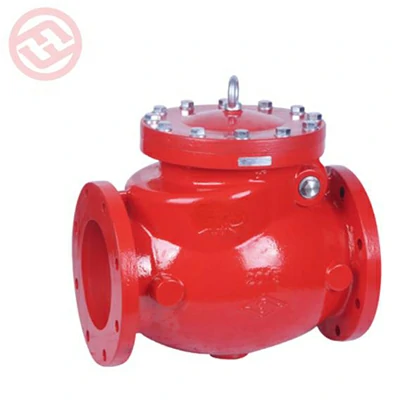Gas fire control valves are installed and connected in a fire control system using the following general steps:
System Design: Before installation, the fire control system should be designed based on the specific requirements and hazards of the area it will protect. This includes determining the appropriate locations for gas fire control valves.
Mounting: Gas fire control valves are typically mounted on a secure and stable surface, such as a wall or panel, using appropriate mounting brackets or hardware. Ensure that the valves are easily accessible for operation and maintenance.
Piping Connection: Gas fire control valves are connected to the gas supply piping using threaded or flanged connections, depending on the specific valve design. It is important to follow the manufacturer’s instructions and applicable codes and standards for proper pipe sizing and connection methods.
Valve Orientation: Ensure that the gas fire control valves are installed in the correct orientation, as indicated by directional arrows or markings on the valve body. This ensures proper flow direction and operation of the valve.
Sealing and Leak Testing: Apply an appropriate thread sealant, such as Teflon tape or pipe dope, to the threaded connections to create a reliable and gas-tight seal. After installation, conduct a thorough leak test to ensure there are no gas leaks in the valve and piping connections.
Electrical Connections: If the gas fire control valve is equipped with electrical components, such as solenoids or control panels, make the necessary electrical connections according to the manufacturer’s instructions. Ensure proper grounding and adherence to electrical code requirements.
Integration with Fire Detection System: Gas fire control valves are often integrated with a fire detection or alarm system. Connect the valves to the control panel or other fire detection devices as per the system design. This integration allows for automatic activation of the valves in response to fire detection signals.
Labeling and Identification: Properly label and identify the gas fire control valves to ensure easy recognition and understanding of their purpose and function. Use appropriate labeling or tagging methods as required by applicable codes and standards.
Testing and Commissioning: Once the installation is complete, conduct a comprehensive system test to verify the proper operation of the gas fire control valves. This includes testing the activation and shut-off mechanisms, as well as ensuring the valves respond appropriately to fire detection signals.
Ongoing Maintenance and Inspection: Gas fire control valves should be regularly inspected and maintained according to the manufacturer’s recommendations and relevant standards. This includes periodic testing, lubrication, seal inspections, and any other maintenance procedures necessary to ensure the valves’ continued performance and reliability.
It is important to consult the manufacturer’s instructions, applicable codes, and standards specific to your jurisdiction when installing and connecting gas fire control valves in a fire control system. Additionally, gas fire control valves it is recommended to involve qualified professionals or fire protection specialists to ensure proper installation, compliance, and system functionality.
How does a gas fire control valve work to regulate the flow of gas in a fire control system?
A gas fire control valve is designed to regulate the flow of gas in a fire control system, allowing for control and activation in case of a fire. The specific operation and functionality of a gas fire control valve may vary depending on the valve type and design.
However, the following is a general overview of how a gas fire control valve works:
Activation Signal: The gas fire control valve is typically connected to a fire detection or alarm system. When a fire is detected, the system sends an activation signal to the valve, indicating that it should open or close to control the flow of gas.
Valve Position: Based on the received activation signal, the gas fire control valve moves to a specific position, either open or closed, to control the gas flow. The valve may be normally closed and opens when activated, or it may be normally open and closes when activated. The valve position is determined by the system design and the desired response to a fire event.
Shut-off Mechanism: Gas fire control valves often incorporate a shut-off mechanism to stop the flow of gas when activated. This mechanism can be triggered by various means, such as a solenoid or a mechanical actuator. When the activation signal is received, the shut-off mechanism is engaged, closing the valve and preventing further gas flow.
Gas Flow Regulation: In addition to on/off control, gas fire control valves may also have the capability to regulate the flow rate of gas. This is particularly useful in situations where a controlled and adjustable amount of gas is required for fire suppression or control purposes. Flow regulation can be achieved through the design of the valve, such as adjustable orifice plates or flow control devices.
Safety Features: Gas fire control valves often incorporate safety features to ensure proper operation and prevent gas leaks or malfunctions. These features can include pressure relief valves, limit switches, position indicators, and manual override mechanisms. These safety features help maintain system integrity and facilitate maintenance and troubleshooting.
By controlling the flow of gas, gas fire control valves play a crucial role in fire control systems. They enable the activation of fire suppression agents, such as gas-based extinguishing agents or water deluge systems, to suppress or extinguish a fire. The valves help to contain the fire, protect critical assets, and minimize the risk of further damage or spread.
It’s important to note that the specific operation and functionality of gas fire control valves may vary depending on the manufacturer, valve type, and system design. It’s recommended to consult the manufacturer’s instructions and specifications for detailed information on the operation of a specific gas fire control valve.

